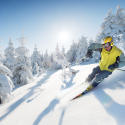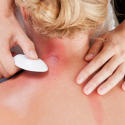
by Carl Parnham RMT First of all, regardless of the objective of a treatment, a massage therapist is trained in using basic techniques such as “effleurage” (long gliding strokes) and “petrassage” –(kneading, circular motions, bending and picking up of the tissues).Basically, the goal of the treatment drives the way effleurage and petrassage are used (speed, force, angle, timing), where they are applied and the amount of time needed for assessment…
Read more »







